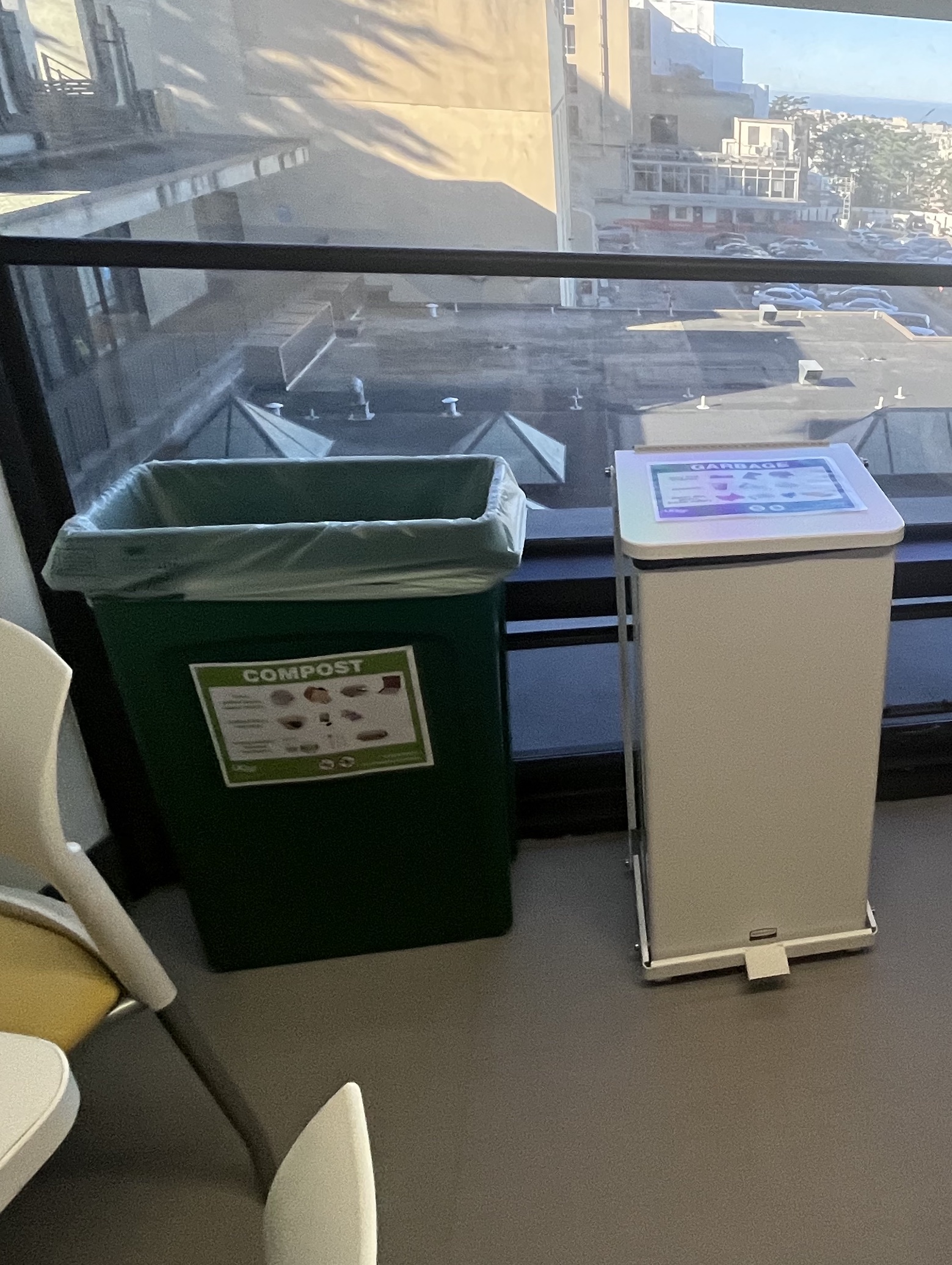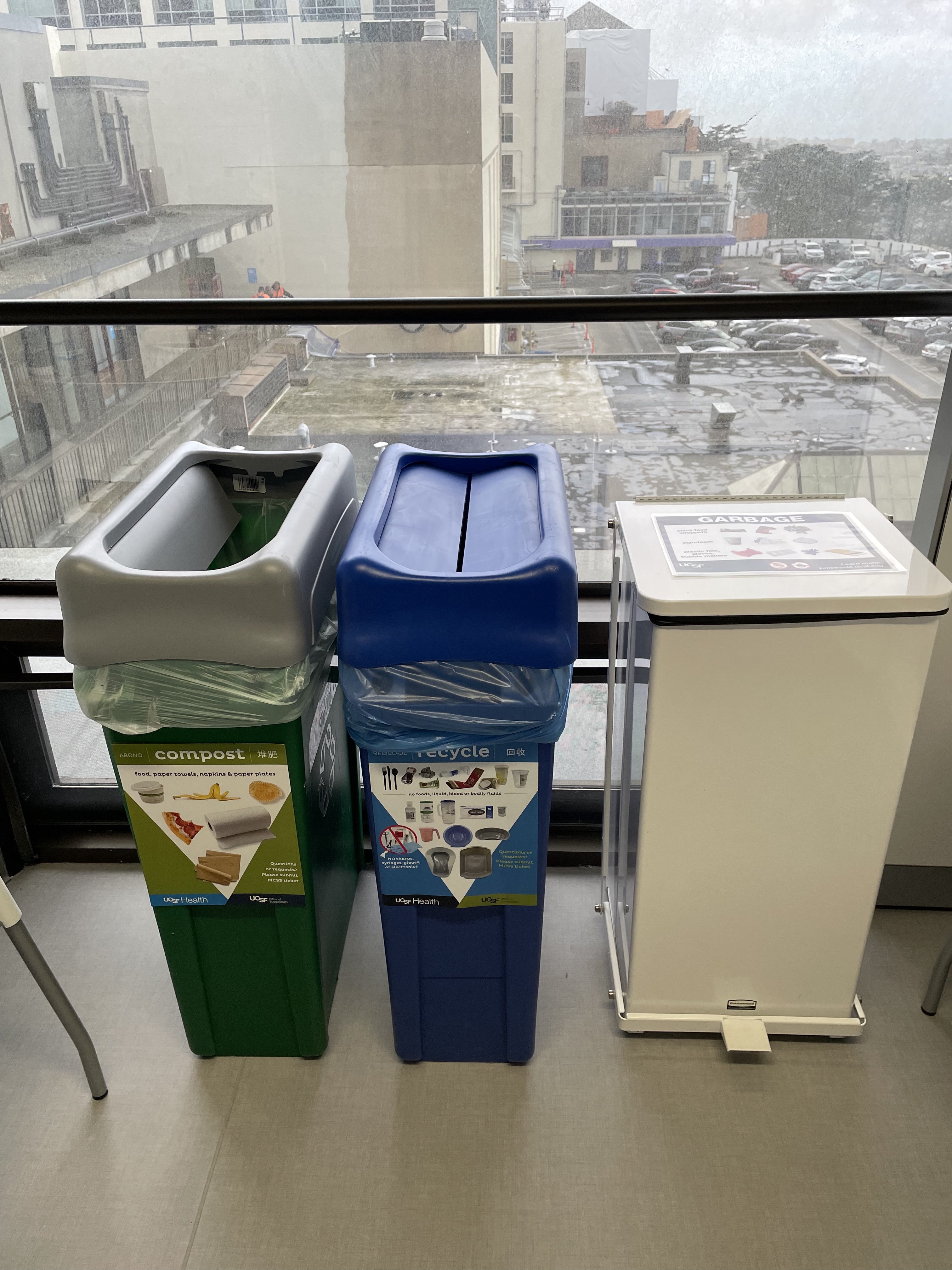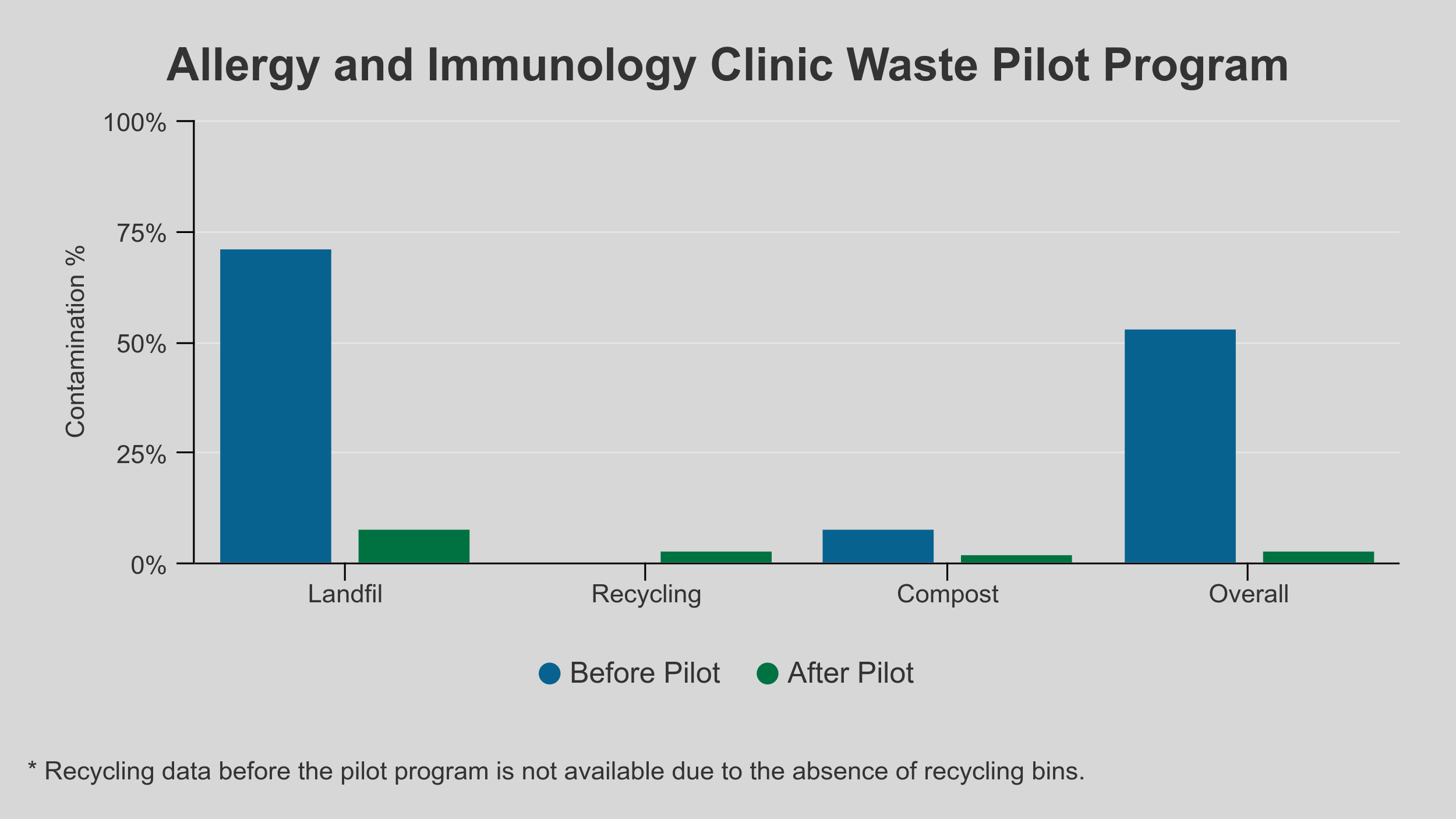Written by Mikayla White.
The City of San Francisco recently identified the Ambulatory Care Center (ACC) at 400 Parnassus as a large waste generator and cited it for failing a waste audit. The ACC is now required to reduce contamination of the landfill, recycling, and compost waste streams.
The San Francisco Refuse Separation Ordinance fines sites that exceed the maximum allowable contamination limits: 5% for compost, 10% for recycling, and 25% for the landfill.
Besides reducing fines, why is proper sorting important? By sorting correctly, we can prevent soil and water contamination, and reduce the use of fossil fuels, decreasing the negative impacts on the health of our patients and the planet.
To address the contamination issue, the UCSF Health sustainability team developed strategies to encourage proper waste sorting, which have proven successful at the Parnassus, Mount Zion, and Mission Bay medical centers.
These strategies include standardizing waste stations, expanding staff education, implementing compost bins in all public restrooms, and introducing a robust auditing program that includes a monthly report card with the findings.
Pilot Project
In October, the Allergy and Immunology clinic, located in the ACC, inquired about expanding composting opportunities. After getting to know their space and their team, we decided they would be the perfect unit to pilot the proposed waste sustainability plan.
The initial walkthrough highlighted some key issues:
- lack of compost and recycling bins resulting in a low recovery number of recyclables and compostable materials
- absence of signage to instruct users what items belonged in each bin
- no staff training on proper waste sorting
Based on the baseline audit data, we proposed the following changes: adding a recycling bin to the breakroom, which already had a compost and landfill bin, and adding a compost bin to the restroom.
 Before
Before
 After
After
Pilot Results
Audits before implementing the changes showed that the landfill bins in the Allergy and Immunology department had a 71% contamination rate, with the majority of contaminants being paper towels and recyclable items, while the compost bin had an 8% contamination rate. Together, the overall contamination was found to be 53%. Overall contamination factors in the total amount of waste from each stream in addition to contamination percentage.

After adding the new bins and completing the staff training, audits showed that contamination dropped to 6% for the landfill, 2% for the compost, recycling had a contamination of 3%, with overall contamination dropping to 3%. This pilot program was a huge success, dropping contamination rates for all waste streams, and well below our initial goals of the 5% compost, 10% recycling, and 25% landfill maximums.